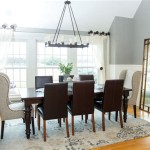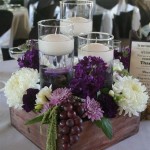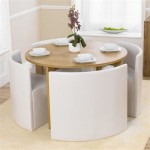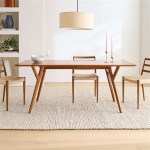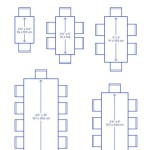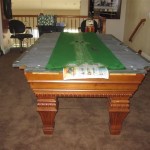The Enduring Appeal of Antique Solid Wood Dining Tables
Antique solid wood dining tables represent more than just furniture; they are tangible links to the past, embodying craftsmanship, history, and a sense of timeless elegance. These tables, crafted from carefully selected hardwoods and built to last for generations, offer a unique character and charm that mass-produced, modern alternatives simply cannot replicate. Their value stems not only from their age but also from the quality of materials, the skill of the artisans who created them, and the stories they hold within their grains.
The allure of antique solid wood dining tables lies in their ability to serve as a focal point within a dining room, injecting a sense of history and sophistication into the space. They are often conversation starters, prompting discussions about their origins, the techniques used in their construction, and the lives of those who have gathered around them over the years. Choosing an antique dining table is an investment in a piece that will continue to appreciate in value and aesthetic appeal, becoming a cherished heirloom passed down through families.
Understanding the Construction and Materials of Antique Dining Tables
The construction of antique solid wood dining tables often reflects the woodworking techniques prevalent during the era in which they were made. Prior to the widespread adoption of power tools, these tables were meticulously crafted by hand, employing joinery methods such as mortise and tenon, dovetail, and tongue and groove. These techniques, known for their strength and durability, ensured that the tables could withstand the test of time. The absence of nails or screws, in many cases, is a testament to the skill and precision of the craftsmen.
The types of wood used in antique dining tables varied depending on the region of origin and the availability of resources. Common choices include oak, walnut, mahogany, cherry, and pine. Oak, known for its strength and durability, was frequently used for sturdy, long-lasting tables. Walnut, with its rich, dark color and beautiful grain patterns, was prized for its elegance and sophistication. Mahogany, often imported from tropical regions, was a favorite for its fine texture and rich, reddish-brown hue. Cherry, with its warm, reddish-brown tone and smooth texture, was another popular choice for creating refined and elegant dining tables. Pine, a softer wood, was often used in more rustic or country-style tables.
Identifying the type of wood used in an antique dining table can be crucial in determining its age and value. Examining the grain patterns, color, and density of the wood can provide valuable clues. Expert appraisers often use magnifying glasses and other tools to analyze the wood's characteristics and determine its origin. The presence of specific wood types can also indicate the table's geographic origin and the trade routes that were prevalent during its construction.
Beyond the wood itself, other materials, such as veneer and inlays, might be incorporated into the table's design. Veneer, a thin layer of wood applied over a less expensive substrate, was often used to enhance the appearance of the table without requiring the use of solid expensive wood throughout. Inlays, decorative elements made from materials like ivory, bone, or different types of wood, were used to add intricate details and visual interest. Understanding the use and quality of these materials is important for assessing the overall value and authenticity of the antique dining table.
Factors Influencing the Value of Antique Solid Wood Dining Tables
Determining the value of an antique solid wood dining table involves considering a range of factors, including its age, condition, rarity, provenance, and aesthetic appeal. Older tables, particularly those from the 18th and 19th centuries, often command higher prices due to their historical significance and the scarcity of well-preserved examples. However, age alone is not the sole determinant of value; a table in poor condition may be worth less than a newer table in excellent condition.
The condition of an antique dining table is a critical factor in its valuation. Tables that have been well-maintained and show minimal signs of wear and tear are generally more desirable. Damage such as cracks, warping, water stains, or missing components can significantly reduce the table's value. However, minor imperfections, such as slight scratches or dents, can sometimes be seen as adding character and authenticity to the piece, particularly if they reflect its age and history.
Rarity also plays a significant role in the valuation of antique dining tables. Tables that are unique in design or construction, or those produced by renowned furniture makers, are often highly sought after by collectors. The scarcity of a particular style or model can drive up its price, especially if there is strong demand from buyers. Researching the production history and identifying any distinguishing features can help to determine the table's rarity and potential value.
Provenance, the documented history of ownership, can also enhance the value of an antique dining table. If the table can be traced back to a prominent individual or family, or if it has been featured in historical records or publications, its value may increase significantly. Provenance provides context and adds a layer of historical significance to the piece, making it more appealing to collectors and enthusiasts.
Finally, the aesthetic appeal of the table is a subjective but important factor in its valuation. Tables that are visually appealing and well-proportioned are generally more desirable than those that are less attractive or poorly designed. The design, style, and overall appearance of the table can influence its desirability and, consequently, its value. The current trends in interior design and the preferences of collectors can also impact the demand for certain styles of antique dining tables.
Caring for and Maintaining Antique Solid Wood Dining Tables
Proper care and maintenance are essential for preserving the beauty and value of an antique solid wood dining table. These tables, having endured the passage of time, require a gentle and consistent approach to cleaning and restoration. Harsh chemicals and abrasive cleaners should be avoided, as they can damage the wood's finish and potentially cause irreversible harm. A soft, damp cloth is typically sufficient for removing dust and light dirt. Avoid excessive moisture, as it can cause warping or staining.
Regular dusting is crucial for preventing the buildup of dirt and grime on the table's surface. A soft, lint-free cloth should be used to gently wipe the table, following the grain of the wood. For more stubborn dirt, a mild soap solution can be used, but it is important to use as little water as possible and to dry the table thoroughly afterwards. Avoid using furniture polishes that contain waxes or silicones, as they can create a buildup that is difficult to remove.
Protecting the table from scratches and water damage is also essential. Use coasters and placemats to prevent rings and stains from forming on the surface. Avoid placing hot dishes directly on the table, as the heat can damage the finish. If the table is used frequently, consider using a tablecloth to protect it from spills and scratches. Sharp objects should be kept away from the table to prevent damage to the wood.
If the antique dining table requires more extensive restoration, it is best to consult with a professional furniture restorer. Attempting to repair or refinish the table yourself can potentially cause further damage and diminish its value. A skilled restorer will have the knowledge and expertise to properly assess the table's condition and to implement appropriate restoration techniques. This may include repairing cracks, replacing missing components, and refinishing the surface.
Maintaining a stable environment is also important for preserving antique wood furniture. Extreme fluctuations in temperature and humidity can cause the wood to expand and contract, leading to cracks and warping. Ideally, the table should be kept in a room with a consistent temperature and humidity level. Avoid placing the table near heat sources, such as radiators or fireplaces, as this can accelerate the drying and cracking of the wood. By following these simple guidelines, one can ensure that their antique solid wood dining table remains a beautiful and cherished heirloom for generations to come.

Vintage Solid Oak Ref No 03041 Regent Antiques

Explore Our Range Of Fabulous Antique Dining Table And Chairs Sets Regent Antiques

Antique Petite Jacobean Dining Table Solid Wood Vintage Furniture Etsy

Dining Tables Strong Oaks Woodshop

Curves Carvings Antique Teak Wood Mumbai Dining Table Set C Dtc0730

Wood Dining Table Ker T 799 60 Bizchair

Antique Solid Wood Dining Cheap Table

Antique Garden Furniture Indoor Solid Wooden Dining Tables Modern Style Table Set Made In Com

Trestle Dining Table Made Of Reclaimed Solid Wood Modern Farmhouse Wooden With Antique Design Etsy

Antique French Solid Wood Round Pedestal Dining Table Chairish

